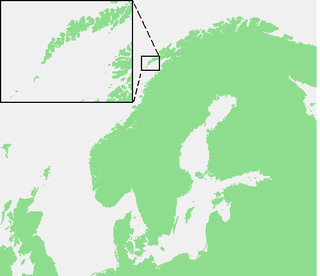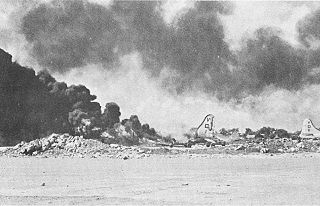Related Research Articles

A commando is a combatant, or operative of an elite light infantry or special operations force, specially trained for carrying out raids and operating in small teams behind enemy lines.

The Commandos, also known as the British Commandos, were formed during the Second World War in June 1940, following a request from the Prime Minister of the United Kingdom, Winston Churchill, for a force that could carry out raids against German-occupied Europe. Initially drawn from within the British Army from soldiers who volunteered for the Special Service Brigade, the Commandos' ranks would eventually be filled by members of all branches of the British Armed Forces and a number of foreign volunteers from German-occupied countries. By the end of the war 25,000 men had passed through the Commando course at Achnacarry. This total includes not only the British volunteers, but volunteers from Greece, France, Belgium, Netherlands, Canada, Norway, Poland, and the United States Army Rangers and US Marine Corps Raiders, which were modelled on the Commandos.
Layforce was an ad hoc military formation of the British Army consisting of a number of commando units during the Second World War. Formed in February 1941 under the command of Colonel Robert Laycock, after whom the force was named, it consisted of approximately 2,000 men and served in the Middle Eastern theatre of operations. Initially tasked with conducting raiding operations to disrupt Axis lines of communication in the Mediterranean it was planned that they would take part in operations to capture the Greek island of Rhodes.
Operation Ambassador was an operation carried out by British Commandos on 14–15 July 1940 within the context of the Second World War. It was the second raid by the newly formed British Commandos and was focused upon the German-occupied Channel island of Guernsey.

Operation Archery, also known as the Måløy Raid, was a British Combined Operations raid during World War II against German positions on the island of Vågsøy, Norway, on 27 December 1941.

Operation Basalt was a small British raid conducted during World War II on Sark during the German occupation of the Channel Islands.

Operation Claymore was a British commando raid on the Norwegian Lofoten Islands during the Second World War. The Lofoten Islands were an important centre for the production of fish oil and glycerine, used in the German war economy. The landings were carried out on 4 March 1941, by the men of No. 3 Commando, No. 4 Commando, a Royal Engineers section and 52 men from the Norwegian Independent Company 1. Supported by the 6th Destroyer Flotilla and two troop transports of the Royal Navy, the force made an unopposed landing and generally continued to meet no opposition. The original plan was to avoid contact with German forces and inflict the maximum of damage to German-controlled industry. They achieved their objective of destroying fish oil factories and some 3,600 t of oil and glycerine. The British experienced only one accident; an officer injuring himself with his own revolver and returned with some 228 German prisoners, 314 loyal Norwegian volunteers and a number of Quisling regime collaborators.

Operation Anklet was the codename given to a British Commando raid during the Second World War. The raid on the Lofoten Islands was carried out in December 1941, by 300 men from No. 12 Commando and the Norwegian Independent Company 1. The landing party was supported by 22 ships from three navies.

Operation Agreement was a ground and amphibious operation carried out by British, Rhodesian and New Zealand forces on Axis-held Tobruk from 13 to 14 September 1942, during the Second World War. A Special Interrogation Group party, fluent in German, took part in missions behind enemy lines. Diversionary actions extended to Benghazi, Jalo oasis and Barce. The Tobruk raid was an Allied disaster; the British lost several hundred men killed and captured, one cruiser, two destroyers, six motor torpedo boats and dozens of small amphibious craft.

Combined Operations Headquarters was a department of the British War Office set up during Second World War to harass the Germans on the European continent by means of raids carried out by use of combined naval and army forces.

Operation Bulmus 6, also known as the Green Island Raid, was a military raid conducted by special operations units of the Israel Defense Forces (IDF) against what was believed to be an Egyptian early-warning radar and ELINT station located on a small artificial island in the Gulf of Suez on the night of 19 July 1969.

Kōsō Abe was an admiral in the Imperial Japanese Navy during World War II.

Shayetet 13 is a unit of the Israeli Navy and one of the primary sayeret (reconnaissance) units of the Israel Defense Forces. Shayetet 13 specializes in sea-to-land incursions, counter-terrorism, sabotage, maritime intelligence gathering, maritime hostage rescue, and boarding. The unit is trained for sea, air and land actions. The unit has taken part in almost all of Israel's major wars, as well as other actions.

Operation Abstention was a code name given to a British invasion of the Italian island of Kastelorizo (Castellorizo) off the Turkish Aegean coast, during the Second World War, in late February 1941. The goal was to establish a motor torpedo-boat base to challenge Italian naval and air supremacy on the Greek Dodecanese islands. The British landings were challenged by Italian land, air and naval forces, which forced the British troops to re-embark amidst some confusion and led to recriminations between the British commanders for underestimating the Italians.
No. 2 Commando was a battalion-sized British Commando unit of the British Army during the Second World War. The first No.2 Commando was formed on 22 June 1940 for a parachuting role at Cambrai Barracks, Perham Down, near Tidworth, Hants. The unit at the time consisted of four troops: 'A', 'B', 'C' and 'D'. Eventually 11 troops were raised. On 21 November, it was re-designated as the 11th Special Air Service (SAS) Battalion and eventually re-designated 1st Parachute Battalion. After their re-designation as the 11th SAS Battalion, a second No. 2 Commando was formed. This No. 2 Commando was the leading commando unit in the St Nazaire Raid and suffered heavy casualties. Those who made it back from St Nazaire rejoined the few who had not gone on the raid, and the commando was reinforced by the first intake of volunteers from the new Commando Basic Training Centre at Achnacarry. No. 2 Commando then went on to serve in the Mediterranean, Sicily, Yugoslavia, and Albania, before being disbanded in 1946.
No. 44 Commando was a battalion size formation in the British Commandos, formed during the Second World War. The Commando was assigned to the 3rd Special Service Brigade and served in the Burma Campaign.

The Commandos formed during the Second World War, following an order from the British Prime Minister Winston Churchill in June 1940 for a force that could carry out raids against German-occupied Europe. Churchill stated in a minute to General Ismay on 6 June 1940: "Enterprises must be prepared, with specially-trained troops of the hunter class, who can develop a reign of terror down these coasts, first of all on the "butcher and bolt" policy..." Commandos were all volunteers for special service and originally came from the British Army but volunteers would eventually come from all branches of the United Kingdom's armed forces and foreign volunteers from countries occupied by the Germans. These volunteers formed over 30 individual units and four assault brigades.

During World War II, a series of Japanese air attacks on the Mariana Islands took place between November 1944 and January 1945. These raids targeted United States Army Air Forces (USAAF) bases and sought to disrupt the bombing of Japan by B-29 Superfortress heavy bombers operating from the islands. The Japanese lost 37 aircraft during this operation, but destroyed 11 B-29s and damaged a further 43. Preparations were also made for commando raids on the bases in early and mid-1945 but these did not go ahead.
References
- ↑ "Google book search" . Retrieved 23 June 2010.